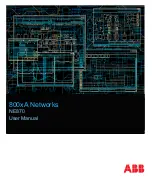
©
National Instruments Corporation
6-1
6
PCB Calculators
The following sections explain how to use Ultiboard’s
PCB Calculators
.
Some of the described features may not be available in your edition of
Ultiboard. Refer to the NI Circuit Design Suite Release Notes for a list of
the features in your edition.
PCB Transmission Line Calculator
To control reflections on high-speed PCBs, it is necessary to make the
traces appear as if they are transmission lines. This is done by calculating
the characteristic impedance of the trace (Zo) and then terminating it with
its characteristic impedance. This makes the trace appear like an infinitely
long transmission line, and it will therefore have no reflections, even
though in reality it has a finite length. (What actually occurs is that all of
the energy that travels down the trace is absorbed, and there is no energy
left to reflect back). Once you have calculated Zo, you can use it to design
the trace’s termination.
There are a number of methods used to terminate transmission lines, for
example, series termination, diode termination, which are beyond the scope
of this manual. We recommend that you refer to any number of available
texts on the subject.
Note
Equations used are based on the IPC-D-317A document from the IPC organization
(
www.ipc.org
).
In addition to Characteristic Impedance (Zo), you can use the
PCB
Transmission Line Calculator
to calculate the following parameters for
typical printed circuit board trace geometries:
•
Per unit length Capacitance (Co)
•
Per unit length Inductance (Lo)
•
Propogation Delay (tpd).
















































